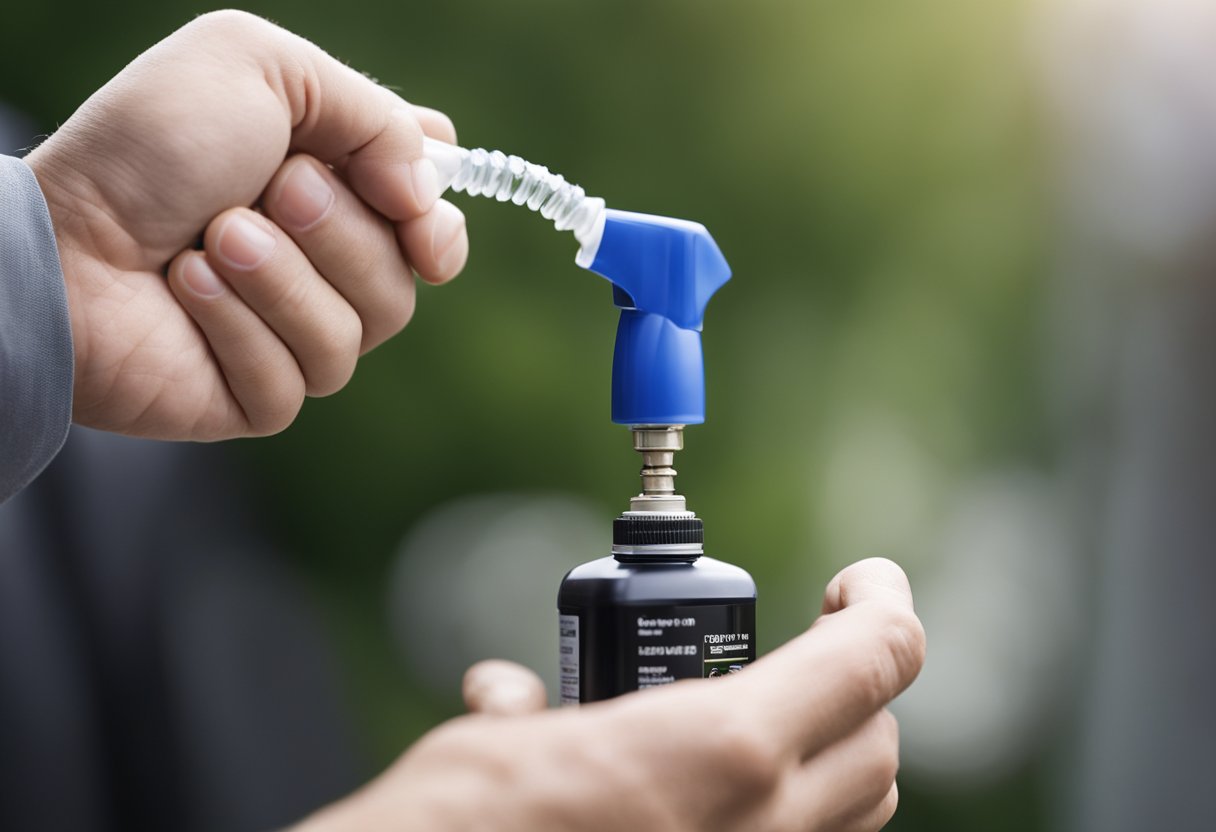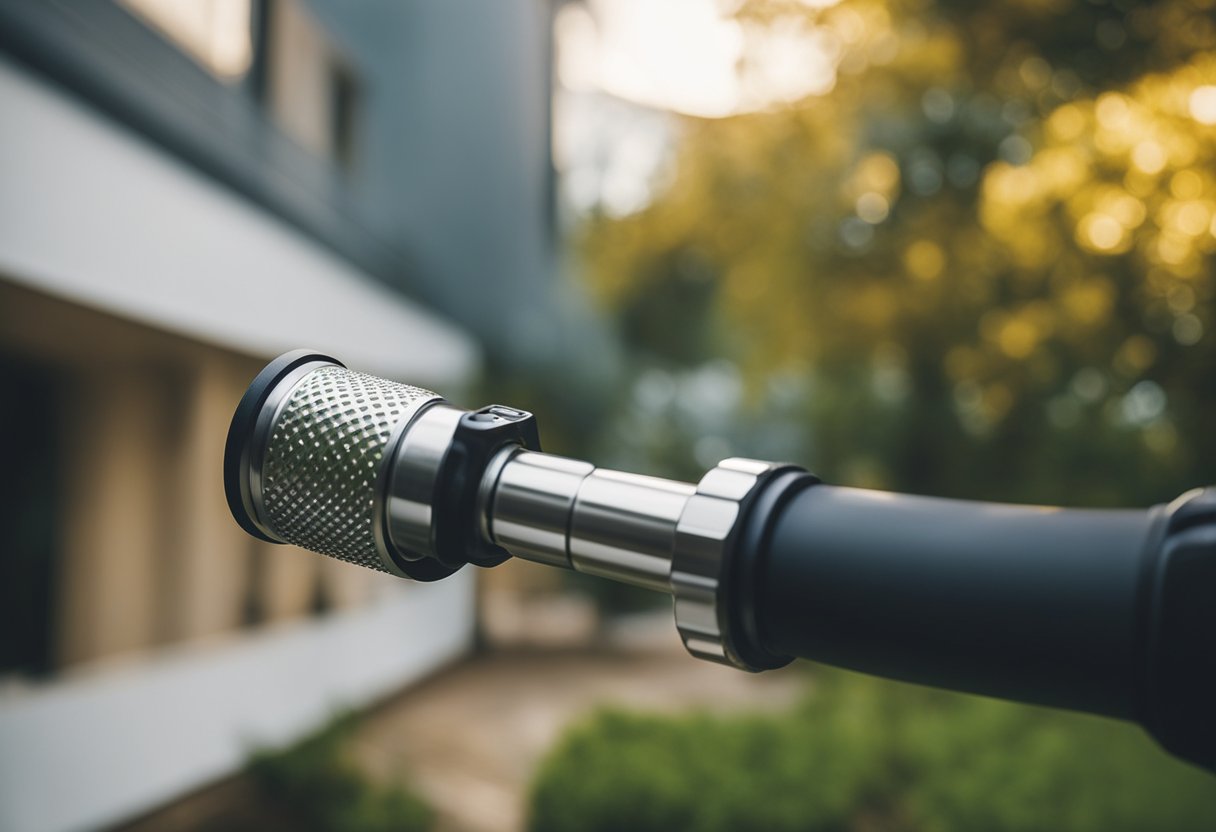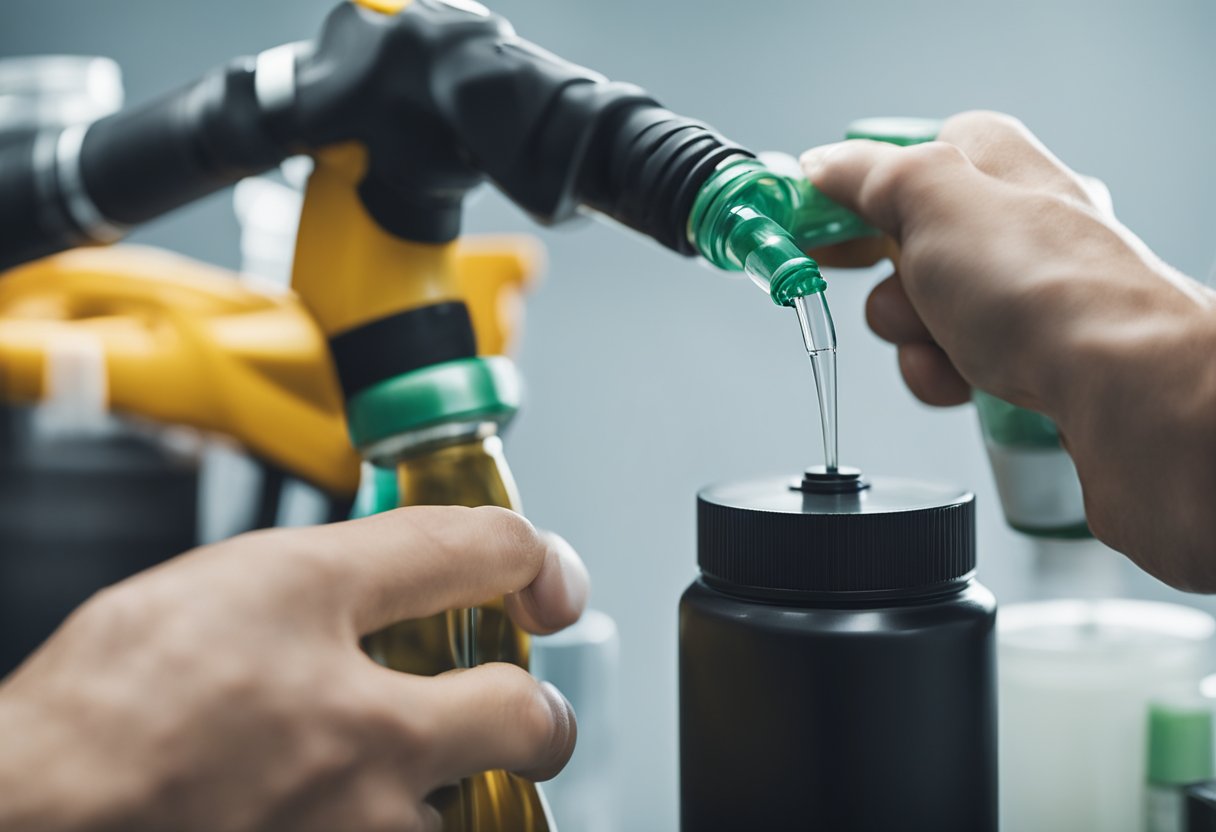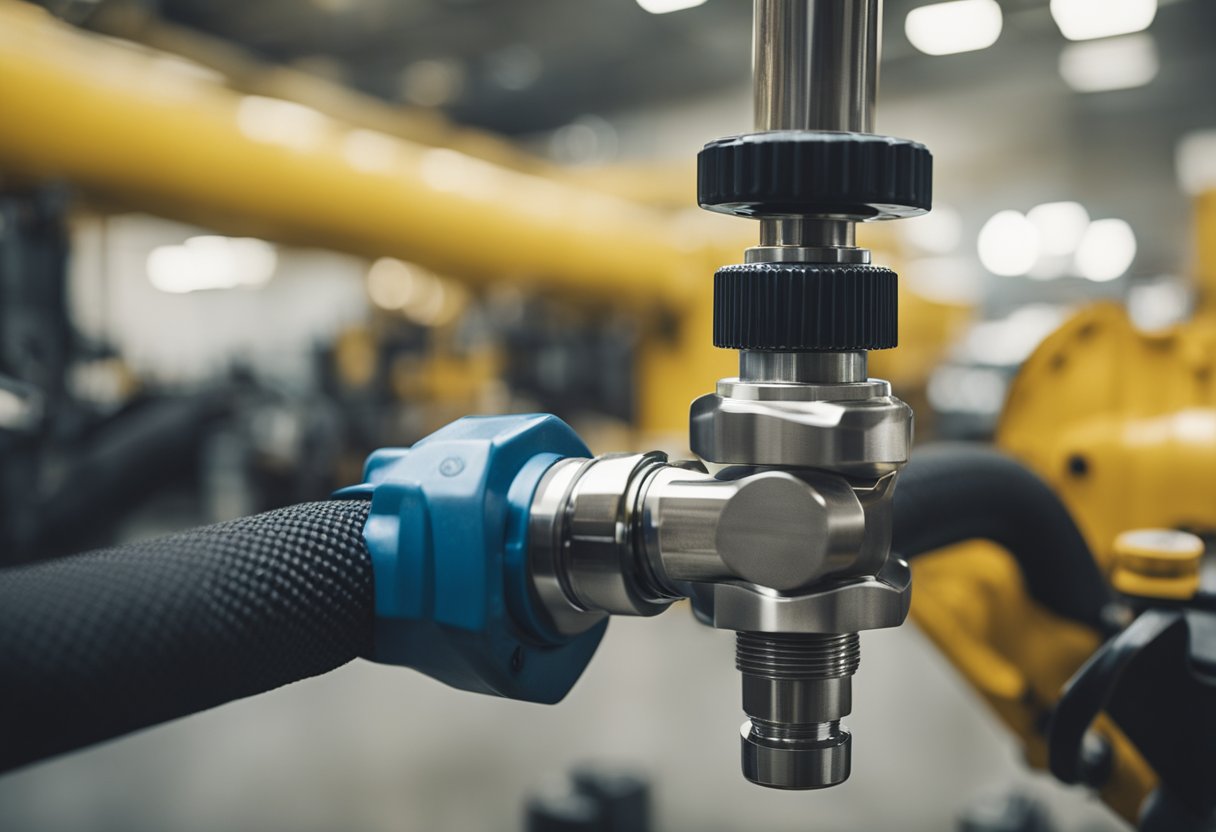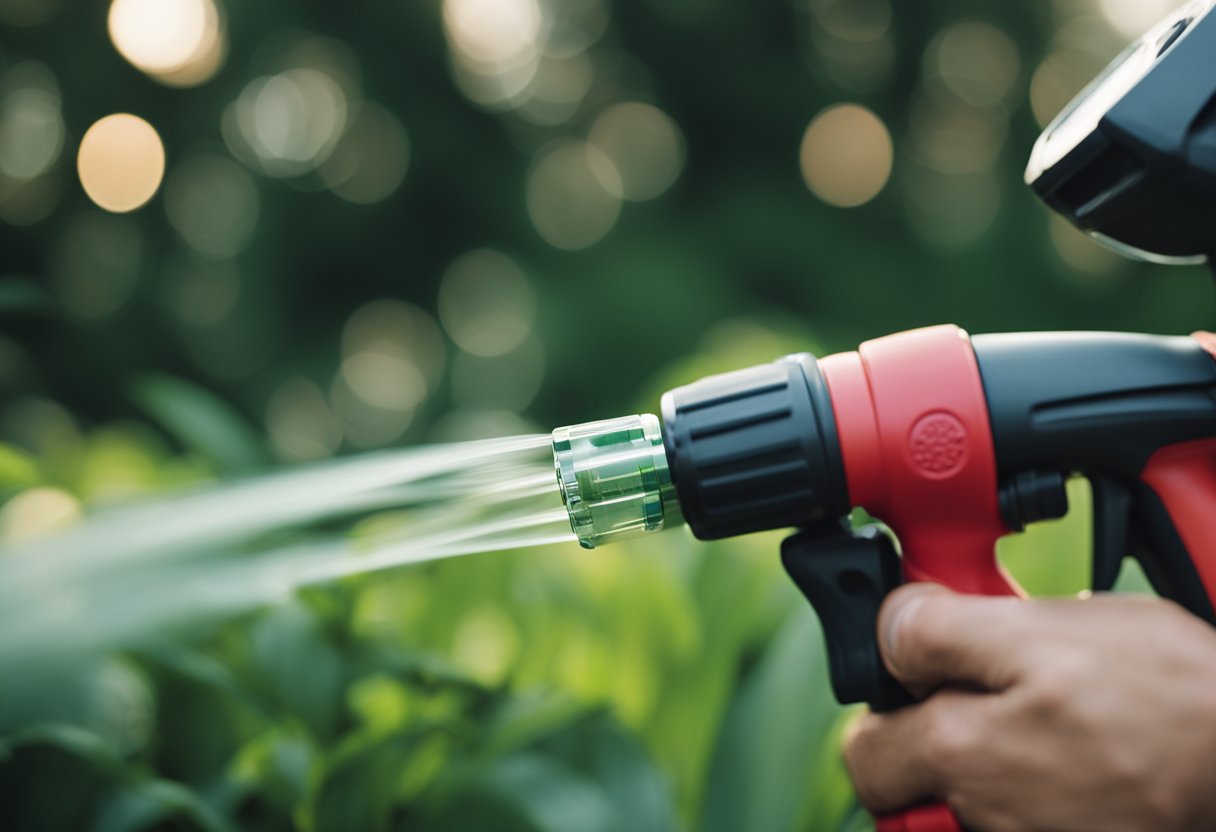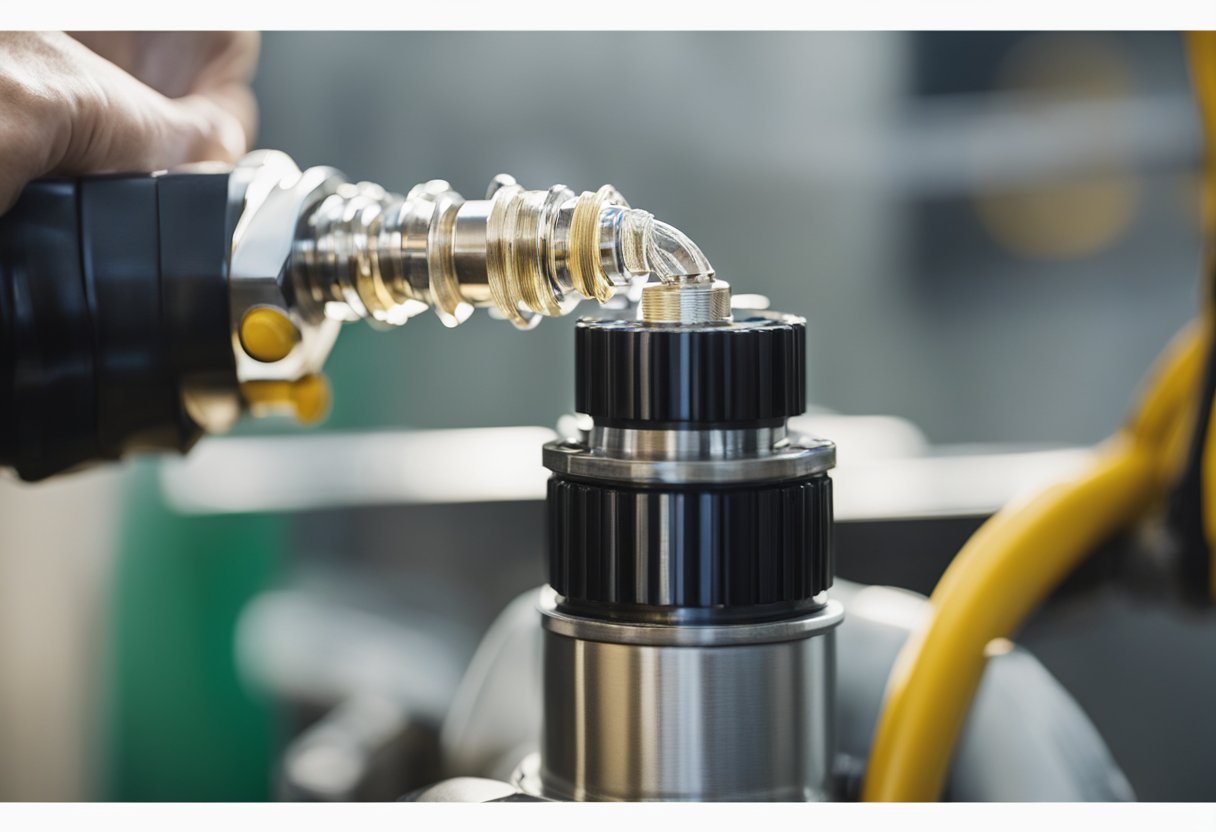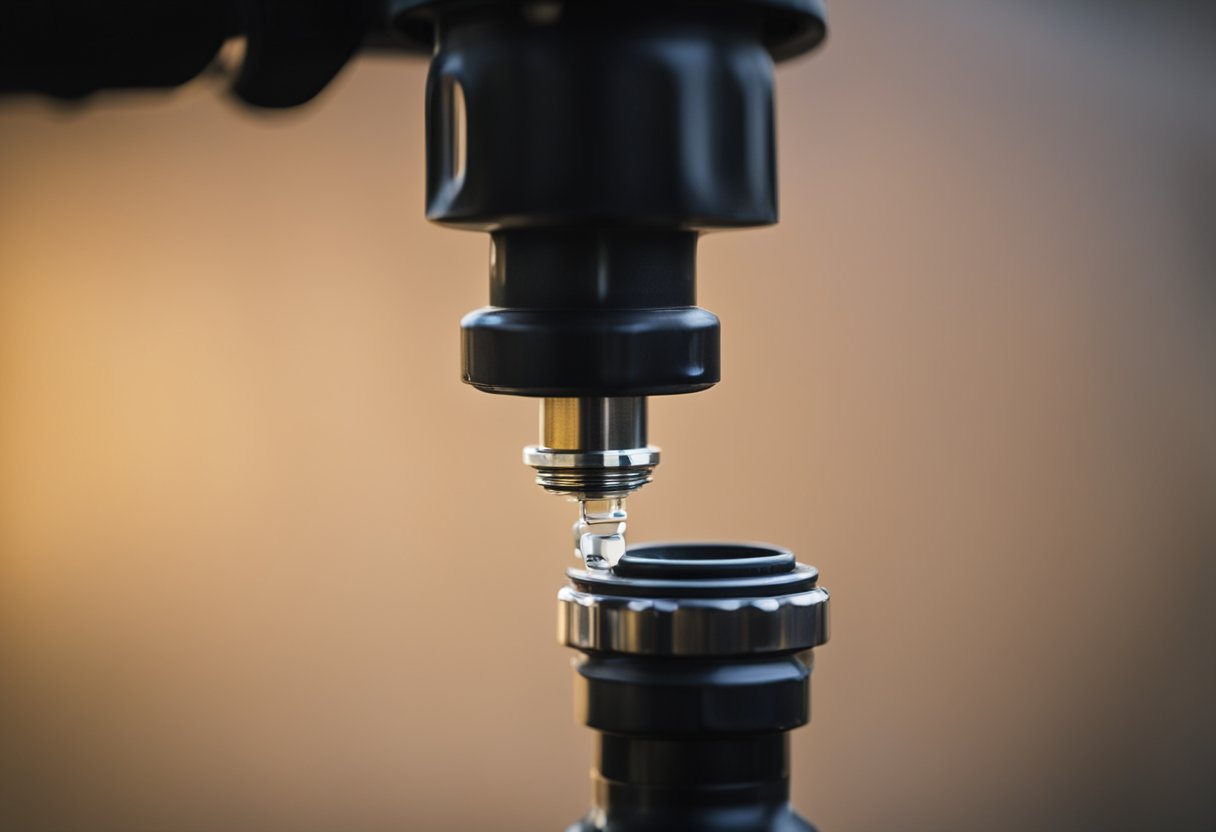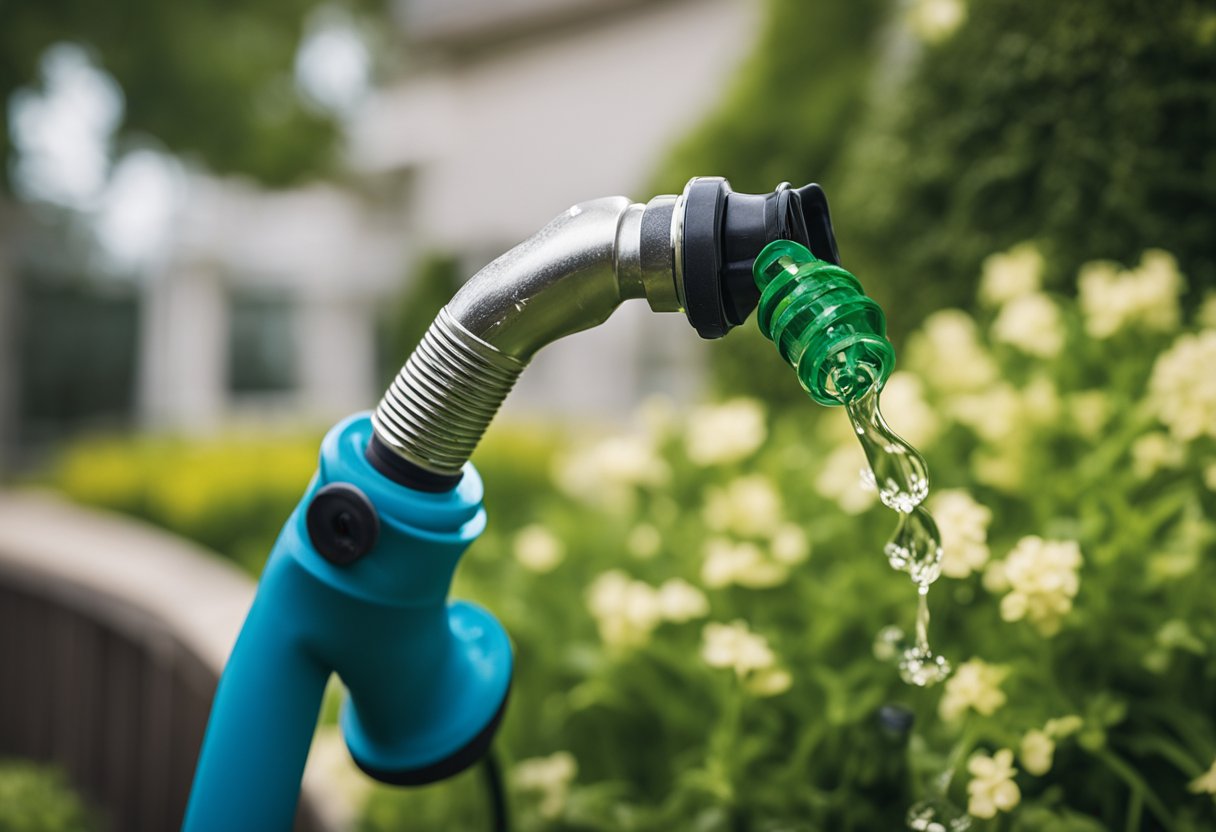As a gardener, I know how frustrating it can be when your hose nozzle gets stuck. It can make watering your plants a difficult and time-consuming task. Fortunately, there are preventive measures you can take to avoid this problem altogether. In this article, I will share with you some tips and tricks on how to prevent your hose nozzle from getting stuck.
Understanding the hose nozzle and its components is essential in preventing it from getting stuck. A hose nozzle is an attachment that is fixed at the end of a garden hose. It is designed to control the flow of water and make watering your garden easier. The nozzle is made up of several components, including the handle, trigger, and spray head. Understanding how these components work together can help you prevent your hose nozzle from getting stuck.
Causes of hose nozzle sticking can vary from dirt and debris to corrosion and wear and tear. Identifying these causes and taking preventive measures can save you time and money in the long run. In the next section, I will discuss some preventive measures you can take to avoid your hose nozzle from getting stuck.
Key Takeaways
- Understanding the hose nozzle and its components is essential in preventing it from getting stuck.
- Causes of hose nozzle sticking can vary from dirt and debris to corrosion and wear and tear.
- Taking preventive measures such as regular cleaning and inspection can help avoid your hose nozzle from getting stuck.
Understanding the Hose Nozzle
https://www.youtube.com/watch?v=cFIcSRkQI2w&embed=true
As a gardener, I know how important it is to have a good hose nozzle that can effectively water plants. However, a hose nozzle that gets stuck can be frustrating and can even damage the hose. In this section, I will discuss the different types of nozzles and how they work.
A hose nozzle is an attachment that is fixed to the end of a garden hose to control the flow of water. They come in different shapes and sizes, and each has a specific purpose. For example, a nozzle with a showerhead-like pattern is ideal for watering delicate plants, while a nozzle with a jet stream is perfect for cleaning surfaces.
One of the most common types of hose nozzle is the spray nozzle. This nozzle has a dial that allows you to adjust the water pressure and spray pattern. Some spray nozzles even have multiple patterns, making them versatile and useful for a variety of tasks.
Another type of nozzle is the watering wand. This long, thin nozzle is ideal for watering hanging baskets or hard-to-reach areas. It has a gentle flow of water that won’t damage delicate plants.
It’s important to note that not all nozzles are compatible with all garden hoses. Some hoses have a threaded end, while others have a quick-release connector. Make sure to check the compatibility of the nozzle and hose before making a purchase.
In summary, understanding the different types of hose nozzles and their uses can help you choose the right one for your gardening needs. By selecting the right nozzle and ensuring compatibility with your hose, you can prevent the nozzle from getting stuck and prolong the life of your garden hose.
Causes of Hose Nozzle Sticking
As a gardening enthusiast, I have encountered my fair share of stuck hose nozzles. It can be frustrating when you’re in the middle of watering your plants, and the nozzle gets stuck. There are several reasons why a hose nozzle can get stuck, and it’s essential to understand them to prevent it from happening in the future.
Corrosion
One of the primary reasons why a hose nozzle can get stuck is due to corrosion. Over time, the internal parts of the nozzle can become corroded, making it harder to detach the nozzle from the spigot. This can happen due to exposure to moisture, which causes rust to form on the metal parts of the nozzle. To prevent corrosion, it’s essential to keep your nozzle dry when not in use and store it in a dry place.
Dirt and Debris
Another reason why a hose nozzle can get stuck is due to dirt and debris. When you use your nozzle, dirt and debris can accumulate inside the nozzle’s threads, making it harder to unscrew the nozzle from the spigot. To prevent this, it’s essential to clean your nozzle regularly and remove any dirt or debris that may have accumulated inside.
Worn or Damaged Parts
Like any other tool, your hose nozzle can experience wear and tear or damage over time. The internal parts can become worn or damaged as they are removed and reattached, making it harder to detach the nozzle from the spigot. Overtightening can cause this wear and tear to be exacerbated. To prevent this, it’s essential to inspect your nozzle regularly and replace any worn or damaged parts.
Freezing Temperatures
If you live in an area with freezing temperatures, your hose nozzle can get stuck due to ice forming inside the threads. To prevent this, it’s essential to drain your hose and nozzle of any water before storing them for the winter. You can also use a nozzle cover to protect your nozzle from the elements.
Water Pressure
High water pressure can also cause your hose nozzle to get stuck. When water pressure is too high, it can cause the nozzle to become wedged in the spigot. To prevent this, it’s essential to regulate your water pressure and use a nozzle that is designed to handle high water pressure.
In conclusion, understanding the causes of hose nozzle sticking is essential to prevent it from happening in the future. Regular maintenance and proper storage can go a long way in keeping your nozzle in good condition.
Preventive Measures
As someone who has dealt with a stuck hose nozzle in the past, I understand the frustration that comes with it. However, there are some preventive measures that can be taken to avoid this issue altogether.
Store the Hose Properly
One of the easiest ways to prevent a hose nozzle from getting stuck is to store the hose properly. This means detaching the nozzle from the hose and draining any excess water from the hose before storing it. It is also important to store the hose in a dry place to prevent any corrosion.
Use a Lubricant
Another way to prevent a hose nozzle from getting stuck is to use a lubricant. Applying a lubricant to the threads of the nozzle can make it easier to detach from the hose. Be sure to use a lubricant that is safe for use with hoses and does not contain any harsh chemicals.
Inspect and Clean the Nozzle
Regular inspection and cleaning of the nozzle can also prevent it from getting stuck. Inspect the nozzle for any signs of wear and tear, and replace it if necessary. Clean the nozzle regularly to remove any dirt or debris that may be causing it to stick.
Turn Off the Water Supply
Before detaching the nozzle from the hose, be sure to turn off the water supply. This will prevent any excess water from flowing through the hose and making it more difficult to detach the nozzle.
Perform Regular Maintenance
Performing regular maintenance on your hose and nozzle can also prevent it from getting stuck. This includes checking the hose for any leaks or damage, and replacing any damaged parts. It is also important to drain the hose after each use to prevent any excess water from causing corrosion.
By following these preventive measures, you can avoid the frustration of a stuck hose nozzle and ensure that your gardening tasks are completed smoothly and efficiently.
Tools and Materials Needed
When it comes to preventing a hose nozzle from getting stuck, having the right tools and materials is crucial. Here are some of the items you’ll need:
Pliers and Wrench
Pliers and wrenches are essential tools for removing a stuck nozzle from a hose. If the nozzle is stuck, you can use pliers or a wrench to twist it in the opposite direction of how it is attached to the hose. Hold the hose nozzle with one hand, and then use the other hand to twist it with the wrench.
Lubricants
Lubricants like WD-40 can help prevent a hose nozzle from getting stuck. Simply spray a small amount of lubricant onto the threads of the nozzle before attaching it to the hose. This will help the nozzle glide on and off the hose without getting stuck.
Teflon Tape
Teflon tape is a thin, white tape that is used to seal pipe threads. It can also be used to prevent a hose nozzle from getting stuck. Simply wrap a small amount of Teflon tape around the threads of the nozzle before attaching it to the hose. This will help the nozzle glide on and off the hose without getting stuck.
Heat Gun
If the nozzle is still stuck, you can try heating up the nozzle with a heat gun. Hold the heat gun about 6 inches away from the nozzle and heat it for a few minutes. This will cause the metal to expand and may help loosen the stuck nozzle.
Groove Pliers and Pipe Wrenches
If all else fails, you can use groove pliers or pipe wrenches to remove a stuck nozzle from a hose. Clamp the pliers or wrenches onto the nozzle and twist in the opposite direction of how it is attached to the hose. Be sure to wear gloves and goggles to protect your hands and eyes from any debris that may fly off during the process.
Having these tools and materials on hand can help prevent a hose nozzle from getting stuck and make it easier to remove a stuck nozzle if it does happen.
Steps to Remove a Stuck Hose Nozzle
https://www.youtube.com/watch?v=Ktf1_YbicR0&embed=true
As a seasoned gardener, I have encountered my fair share of stuck hose nozzles. It can be frustrating and time-consuming to deal with, but fear not, with the right tools and techniques, you can easily remove a stuck hose nozzle. Here are some steps to follow:
-
Loosen the Nozzle: First, try to loosen the nozzle by turning it counterclockwise with your hands. If that doesn’t work, use a pair of channel locks to give it a little more torque. Be careful not to damage the nozzle or the hose attachment.
-
Lubricate the Nozzle: If the nozzle is still stuck, try lubricating it with a penetrating oil or a silicone spray. Spray the lubricant around the base of the nozzle and let it sit for a few minutes. This will help to loosen any rust or debris that may be causing the nozzle to stick.
-
Tap the Base: If the nozzle is still stuck, tap the base of the nozzle gently with a rubber mallet or a hammer. This can help to loosen any debris or rust that may be causing the nozzle to stick.
-
Apply Heat: If all else fails, try applying heat to the nozzle. Use a hairdryer or a heat gun to heat up the nozzle for a few minutes. This can help to expand the metal and loosen any rust or debris that may be causing the nozzle to stick.
-
Replace the Nozzle: If you have tried all of these steps and the nozzle is still stuck, it may be time to replace it. Go to your local hardware store and purchase a new nozzle. Make sure to choose one that fits snugly onto your hose attachment.
By following these step-by-step guides, you can easily remove a stuck hose nozzle. Remember to take your time and be gentle when tapping the base or using channel locks. With a little patience and the right tools, you can get your garden hose back in working order in no time.
Choosing the Right Hose Nozzle
As I have learned from my experience, choosing the right hose nozzle is crucial to preventing a stuck nozzle. There are various types of hose nozzles available on the market, made of different materials such as brass, aluminum, and plastic. The material you choose will affect the durability of your nozzle. While plastic nozzles are cheap, they are not as durable as brass or aluminum nozzles. Hence, investing in a high-quality nozzle made of durable materials is a wise choice.
Besides the material, the type of nozzle also plays a role in preventing a stuck nozzle. There are different types of nozzles available such as a fan nozzle, a jet nozzle, and a spray nozzle. Each type of nozzle has its own purpose, and it is important to choose the right one for the task at hand. For instance, a fan nozzle is suitable for watering plants, while a jet nozzle is ideal for cleaning tasks.
Another important factor to consider is the O-ring. The O-ring is a small rubber ring that is located inside the nozzle. It helps to create a watertight seal and prevent leaks. A damaged or worn-out O-ring can cause the nozzle to get stuck. Therefore, it is important to check the O-ring regularly and replace it if necessary.
In summary, choosing the right hose nozzle is crucial in preventing a stuck nozzle. Investing in a high-quality nozzle made of durable materials such as brass or aluminum is recommended. Additionally, choosing the right type of nozzle for the task at hand and checking the O-ring regularly can also help prevent a stuck nozzle.
Additional Tips and Tricks
In addition to the methods mentioned earlier, there are a few more tips and tricks that can help prevent your hose nozzle from getting stuck.
Use Hose End Fittings
One of the most common reasons for a stuck hose nozzle is a damaged or worn-out hose end. Using hose end fittings can help prevent this problem. These fittings provide a secure connection between the hose and the nozzle, reducing the risk of the nozzle getting stuck.
Use Safety Gloves
If you need to use pliers or a wrench to remove a stuck nozzle, it’s important to wear safety gloves to protect your hands. These tools can be difficult to grip, and if they slip, they can cause serious injury. Wearing safety gloves can help prevent cuts and bruises, as well as protect your hands from the heat of the sprayer if you need to use a blow dryer or heat gun.
Be Careful with Heat
While applying heat to the nozzle can help loosen it, it’s important to be careful. Direct sunlight or excessive heat from a blow dryer or heat gun can damage the plastic or rubber parts of the nozzle. This can cause the nozzle to become brittle and more likely to break or crack. It’s best to use low heat and avoid exposing the nozzle to direct sunlight for extended periods.
Additional Tips
Here are a few more tips to help prevent your hose nozzle from getting stuck:
- Regularly inspect your nozzle and hose for signs of wear and tear.
- Clean your nozzle and hose after each use to prevent debris from building up.
- Use a hacksaw to cut off the nozzle if all else fails, but be sure to use caution and wear safety gloves.
By following these tips and tricks, you can help prevent your hose nozzle from getting stuck and ensure that your watering tasks go smoothly.
Conclusion
In conclusion, preventing a hose nozzle from getting stuck is essential to ensure that your gardening tasks are completed smoothly and efficiently. By following the tips and tricks mentioned in this article, you can prevent your hose nozzle from sticking, leaking, or getting damaged.
One of the most common causes of a stuck hose nozzle is overtightening. To avoid this, make sure to tighten the nozzle only until it is snug. You can also use a lubricant such as vegetable oil or petroleum jelly to make it easier to twist the nozzle on and off.
Another way to prevent a stuck nozzle is to clean it regularly. You can use vinegar to remove any mineral buildup that may be causing the nozzle to stick. Simply soak the nozzle in a mixture of equal parts vinegar and water for a few hours, and then rinse it off with clean water.
If you live in a cold climate, it is important to prepare your hose and nozzle for the winter months. This can be done by draining the hose of any water and storing it indoors. You can also remove the spray nozzle from the hose and store it in a warm and dry place.
In summary, preventing a hose nozzle from getting stuck is not difficult. By taking a few simple steps, you can ensure that your nozzle is free from sticking, leaks, and damage. With these tips and tricks, you can enjoy hassle-free gardening all year round.
Frequently Asked Questions
How can I prevent my hose nozzle from sticking?
To prevent your hose nozzle from sticking, make sure to keep it clean and free of debris. After each use, remove any dirt or debris from the nozzle by rinsing it with water. Additionally, lubricate the threads of the nozzle and the hose connector with a silicone lubricant to reduce friction and prevent sticking.
What are some tips for avoiding a stuck hose attachment?
To avoid a stuck hose attachment, make sure to properly attach and detach the nozzle from the hose. Avoid overtightening the nozzle, as this can cause the threads to become damaged and make it difficult to remove. Additionally, avoid using excessive force when attaching or detaching the nozzle, as this can cause the threads to become stripped or damaged.
How do I properly attach a new nozzle to my garden hose?
To properly attach a new nozzle to your garden hose, first make sure that the threads on the nozzle and the hose connector are clean and free of debris. Then, screw the nozzle onto the hose connector by turning it clockwise. Make sure that the nozzle is securely attached, but avoid overtightening it.
What should I do if my hose connector won’t come off?
If your hose connector won’t come off, try using a pair of pliers or a wrench to loosen it. If this doesn’t work, try heating up the connector with a hair dryer or a heat gun to expand the metal and loosen the threads. Additionally, you can try soaking the connector in a solution of equal parts vinegar and water to help dissolve any mineral buildup that may be causing it to stick.
Why does my hose attachment keep popping off and how can I fix it?
If your hose attachment keeps popping off, it may be due to a damaged or worn out gasket. To fix this, replace the gasket with a new one. Additionally, make sure that the threads on the nozzle and the hose connector are clean and free of debris, and that the nozzle is securely attached to the hose.
How can I prevent my hose from getting stuck to the spigot?
To prevent your hose from getting stuck to the spigot, make sure that the threads on the spigot and the hose connector are clean and free of debris. Additionally, lubricate the threads with a silicone lubricant to reduce friction and make it easier to attach and detach the hose. Finally, avoid overtightening the hose connector, as this can cause the threads to become damaged and make it difficult to remove.

Hi, I’m Sal Muller of Tooltrip.com. My DIY experience led me to understand essential power tools for home projects. Tooltrip.com guides enthusiasts and professionals in choosing right tools for any job. I provide concise top tool reviews for easier, efficient DIY.

